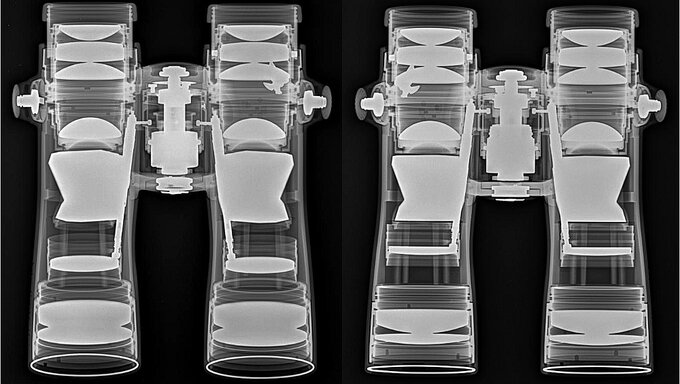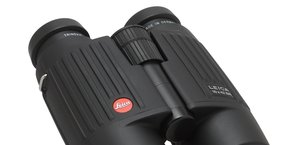Optical construction of Swarovski NL Pure binoculars
The newest Swarovski Optik binoculars series, called NL Pure, consists of three models that feature very wide fields of view, corrected perfectly up to the edge. What optical system hides behind such an excellent image quality? It was a complete mystery but our X-ray photos can reveal a bit more about the unique Swarovski design.
In the case of the predecessor, the EL Swarovision series (sometimes also sold as Field Pro), producers have published an optical diagram of the 8.5×42 model.
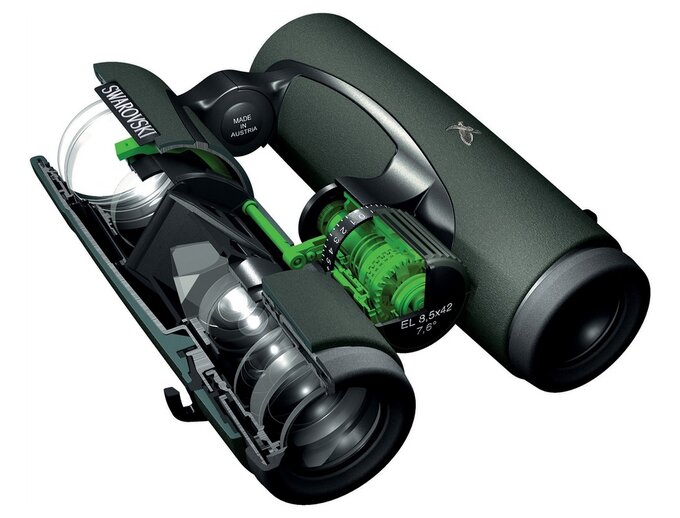 Optical construction of Swarovski EL 8.5x42 W B. |
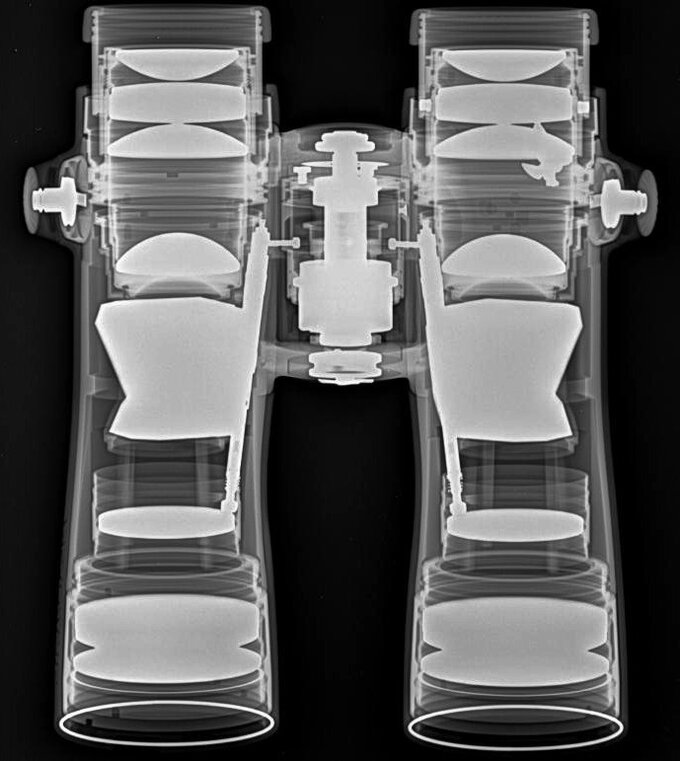 X-ray image of Swarovski NL Pure 8x42. Photo by 3mnich |
As you see, compared to the EL series instruments, the changes aren't that huge. Once again you deal with a 3-element (1+2) objective lens behind which you find a single focusing element and Schmidt-Pechan prisms. These prisms are slightly shifted and turned against each other so they form the characteristic shape of the barrels of the new series. What's more, they cause a shift of the beam – contrary to other Schmidt-Pechan prisms binoculars the optical path of the eyepiece is not perfectly aligned with the optical path of the objective.
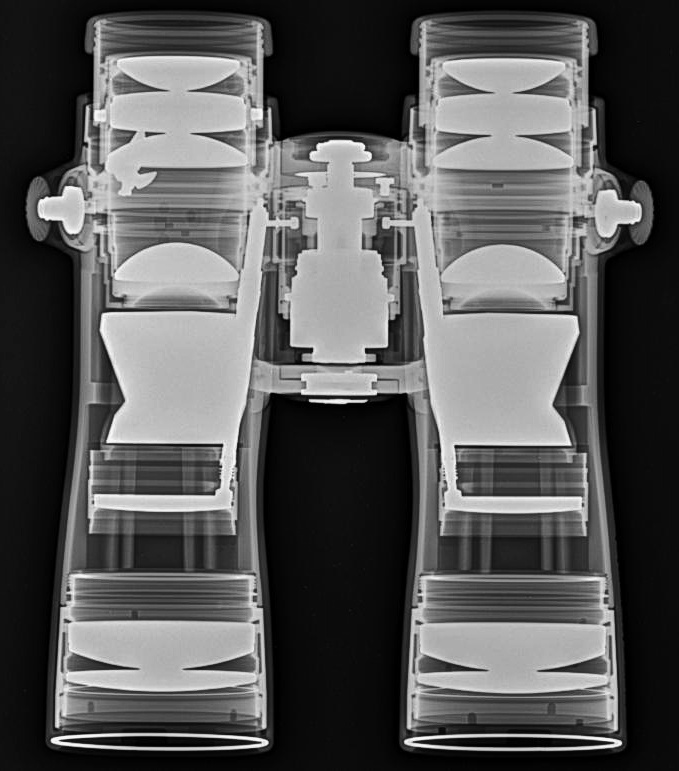 X-ray image of Swarovski NL Pure 8x42. Photo by 3mnich |
The construction of the field flattener is also a moot point. In the case of the EL models it consisted of two separate elements; our X-rays of the NL Pure show something like a cemented doublet. The NL Pure might feature one element more than the EL device but, at the same time, less air-to-glass surfaces (20 in the EL vs 18 in the NL Pure). Of course our photos can't say anything concrete about types of glass used in both systems. The newer construction might contain more exotic optical glass and also that which provide higher transmission.
Update: Specification sheet provided by Swarovski indicates that NL Pure binoculars consists of 24 opical elements, it means 12 per each tube. It is then clear that we have 3-element objective lens, focusing element, 2-element prism system, 2-element field flattener and 1+2+1 system closest to the eye. In general, it is the same system as in EL series.




